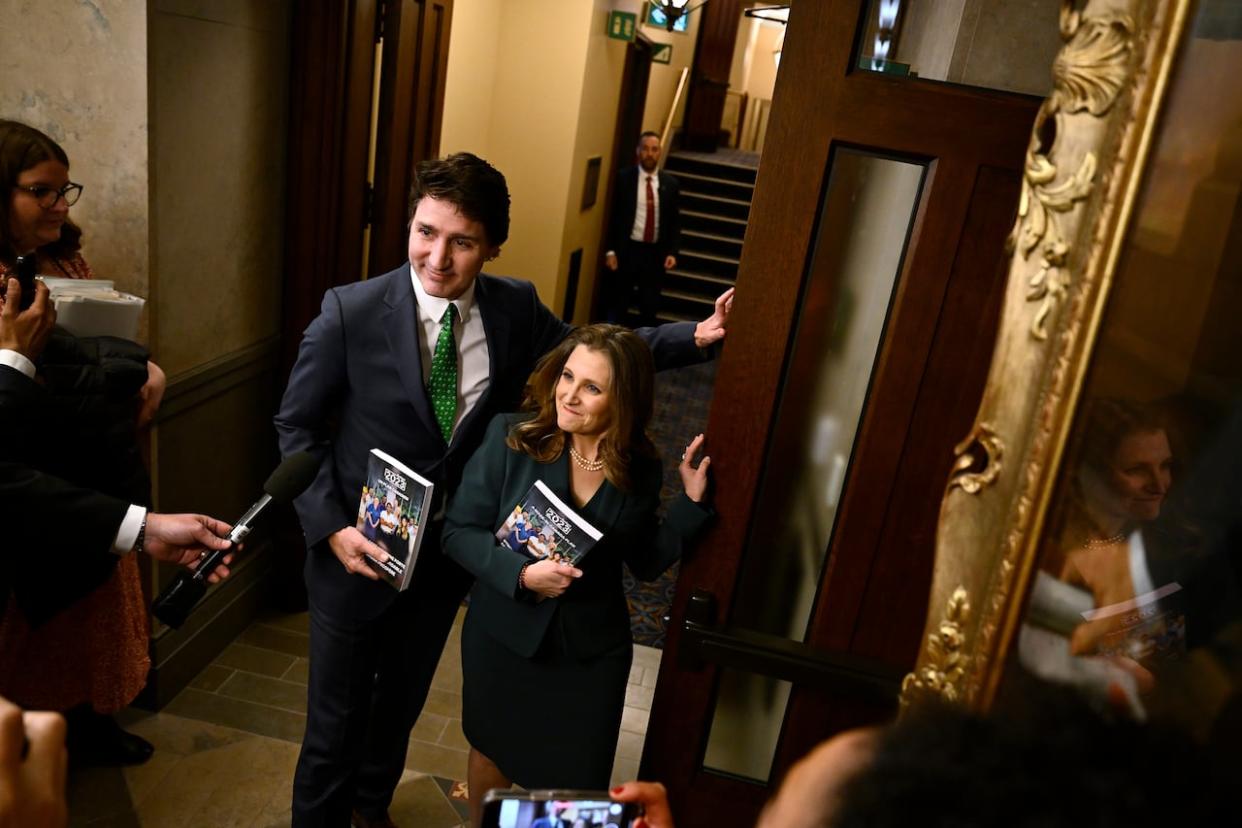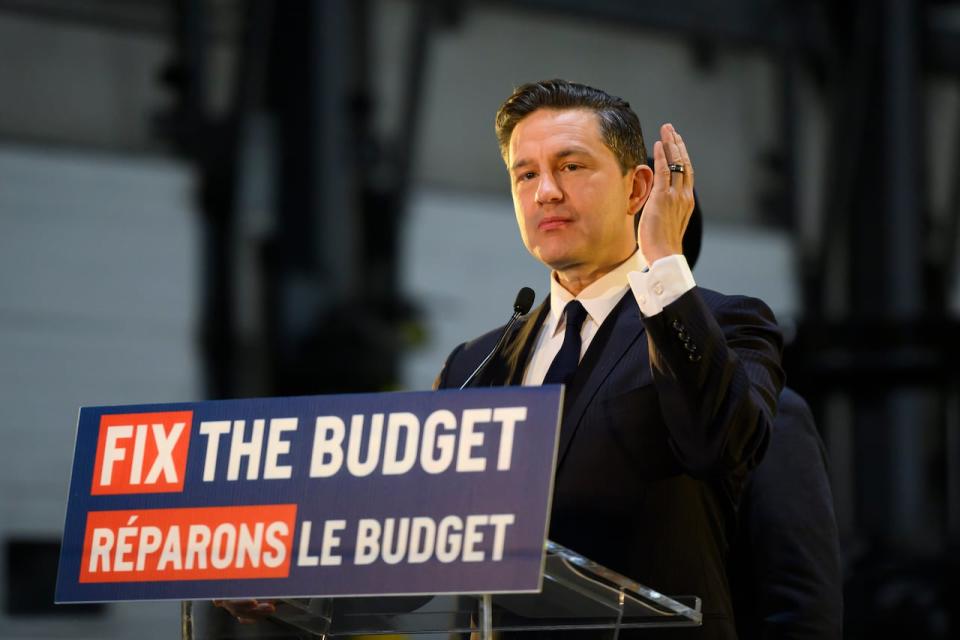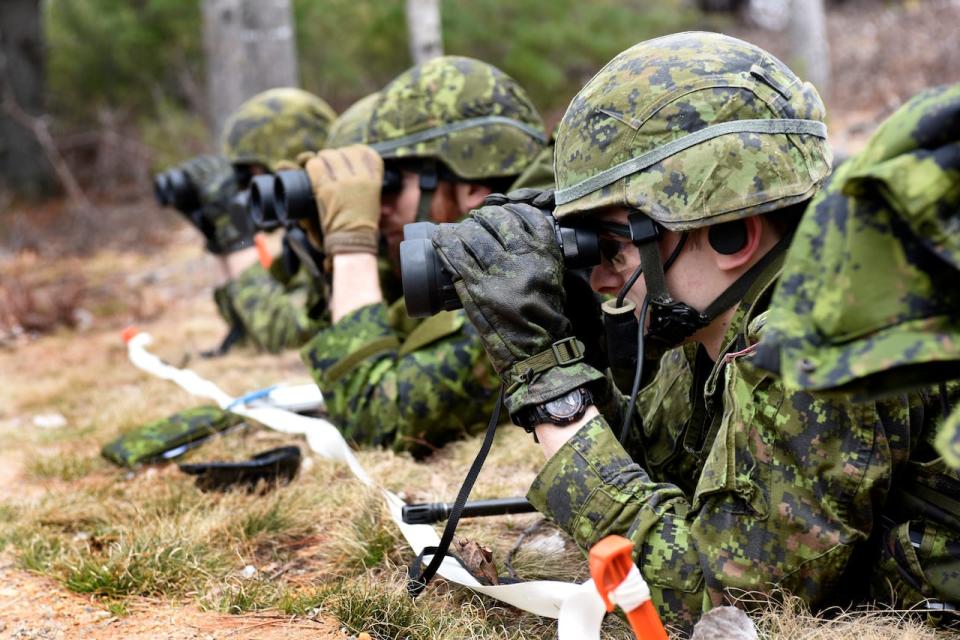The federal government under Trudeau is bigger — but not as big as it used to be

Earlier this year, the Public Service Commission of Canada reported that the size of the federal public service had reached a record new high. According to Treasury Board Secretariat data, Ottawa employed 357,247 public servants in 2023.
That also marked a significant increase over where the public service stood when Justin Trudeau's government came to office in 2015. At the time, TBS said the federal public service employed 257,034 people.
But something else reached a record size in 2023 — Canada itself. And to account for the fact that the country the federal government serves is always growing, it might make more sense to measure the size of the public service as a share of the total population.
The federal public service represented 0.90 per cent of the Canadian population in 2023. That's still larger than its share of the population in 2015 (0.72 per cent). But it's not a record.
According to data from the TBS that goes back to 1980, the federal public service's share of the population peaked at 0.99 per cent in 1983 and 1984. That figure began to fall thereafter, but it was still at or above 0.90 per cent in every year from 1980 to 1992.
On the eve of the Liberal government's eighth budget, and with the size and shape of the federal government becoming a focus of political debate, it's worth taking stock of what has changed during the Trudeau era in Ottawa — and placing it in its historical context.
And on a few broad measures, the trend is similar to what the data on the public service indicates. Under Trudeau, the federal government is bigger than it was in 2015. But it's still not as big as it used to be.
Trudeau reversed a trend toward smaller government
The federal government's spending, revenues and debt also can be measured against the size of Canada's economy. That allows for some broad historical comparisons.
In the last full fiscal year of Stephen Harper's Conservative government, the ratio of total program spending to GDP was 12.8 per cent. For the most recent fiscal year — 2022-2023 — total program spending amounted to 16.1 per cent of GDP.
(The original version of this story incorrectly used program spending figures that excluded net actuarial losses and gains related to pensions and benefits. A government accounting change in 2019 resulted in those actuarial figures being listed separately. For the sake of comparing numbers across decades, actuarial losses need to be included. As a result, program spending in 2014-2015 was 12.8 per cent, not 12.5 per cent. And spending in 2022-2023 was 16.1 per cent, not 15.8 per cent. Other numbers have been amended below.)
That's not a small increase. But 16.1 per cent is still below the non-pandemic peak of 18.3 per cent — in 1984.
Revenue figures tell a similar story.
In 1992, federal revenues were 18.0 per cent of GDP. After several rounds of broad tax reductions — including the Harper government's decision to cut the GST by two points — total federal revenues came to 14.0 per cent of GDP in 2015. For the last fiscal year, revenues were 16.1 per cent.
As a percentage of GDP, the federal debt is also higher than it was in 2015 but still lower than its peak. The debt-to-GDP ratio for last year was 42.2. In 2015, it was 31.5.
But a simple line graph also shows how much of that increase is a result of the pandemic. In the last full fiscal year before COVID-19 swept the planet, the debt-to-GDP ratio was 31.2.
Federal debt charges were 1.3 per cent of GDP last year and are set to rise to 1.8 per cent next year. The public debt charge in Harper's last year in office was 1.2 per cent. But public debt charges were also several times larger in previous decades.
Looking at federal spending as a share of GDP isn't the only way to measure the size of government. Per capita spending, for instance, suggests that the federal government is spending more than it ever has.
But per capita spending also suggests that Harper ran the second-most expensive federal government ever. Even Conservatives might be reluctant to embrace that metric.
Any assessment of the fiscal health of the nation also has to consider the situation at the provincial level. While much will be made next week of the state of the federal deficit, eight provinces have now projected deficits for the coming fiscal year.
But when measured against GDP and viewed in the context of the last 40 years, the story is that the Trudeau Liberals have broken with a 30-year trend toward a smaller federal government — but without quite returning the government to the size it was before the cuts began.
Right-sizing government?
Even the Liberals might admit that some of their room to spend was created by the restraint imposed by previous governments. But a more activist government is also basically what they promised in 2015 — epitomized by their explicit decision to run deficits.
"The point I make to people is, Canadians actually kind of wanted all of that new spending," Tyler Meredith, a former senior policy adviser in the Trudeau government, said in an interview this week. "They wanted the [Canada Child Benefit], they wanted investments in Indigenous communities. They wanted additional defence spending. They wanted investments in decarbonization and climate action."
One way to look at the change, Meredith said, is that "perhaps what we learned through the 2000s is that government got too small. And now, actually, we're really kind of right-sizing government for some of the big challenges that we face."
A fuller accounting would be necessary to explain everything that has contributed to the increase in government spending. But the Liberals surely would be happy to point to a few things.
According to the government's own figures, spending on Indigenous communities has increased from $11 billion in 2016 to $30 billion in 2024. The Canada Child Benefit amalgamated several existing programs but added funding, and was later indexed to inflation. New funding for child care was rolled out in 2021. And the federal government is now spending billions more on housing and clean technology.
(The federal carbon tax and rebates also add 0.3 per cent of GDP to both revenue and spending totals.)

Conservative Party Leader Pierre Poilievre gives remarks during a press conference in Mississauga, Ont., on April 7. (Christopher Katsarov/Canadian Press)
Conservative Leader Pierre Poilievre tends not to focus on such things when he talks about reducing the size of government. He prefers to talk about funding for the Canada Infrastructure Bank or the public service's spending on management consultants and projects like ArriveCan.
Whether Poilievre can devise a plan to balance the budget in the short-term while only touching things voters don't care too much about remains to be seen. But the public service's use of outside contractors suggests that, whatever the size of the government, the talent and resources it has on hand also matter — and solving that problem might end up requiring more investment.
How big should the federal government be?
Sean Speer, a former policy adviser to Stephen Harper, wrote last fall that the federal government had now come to reflect "Stephen Harper's tax rates and Justin Trudeau's spending preferences" and that those two things were "ultimately irreconcilable." Speer concluded that something had to give.
As noted above, Speer's frame isn't entirely accurate — federal revenues have increased since the Conservatives left office. Meredith notes that those increases have been achieved without broad-based tax hikes. Shortly after coming to office, the Trudeau government raised taxes on those earning $200,000 or more, but since then it has largely focused on closing loopholes and ensuring compliance.
But there's still a gap between revenues and spending. Forecasting far into the future, the last fall economic update projected a deficit of $15 billion in 2029. And Meredith said there's a debate to be had about whether more revenue is needed to pay for further demands, from health care to national defence to decarbonization.
A poll released by the Angus Reid Institute last week showed that 59 per cent of Canadians thought the federal government was spending "too much." But that sentiment plummeted when respondents were asked about specific areas of spending: just 22 per cent of those polled said Ottawa was spending too much on social programs, while 32 per cent said environmental measures were getting more money than they were worth.

Soldiers with the 36 Canadian Signals Regiment train at Camp Aldershot in Nova Scotia in April 2016. (WO Jerry Kean/5Cdn Div HQ Public Affairs)
Conversely, 48 per cent of respondents said the government spends "too little" on national defence. Those voters might wish to see Canada hit the NATO target for defence spending — but the parliamentary budget officer has reported that reaching that goal would require $13 to $18 billion in additional annual spending.
All these numbers frame what could be a consequential debate over the next year and a half about how the federal government has evolved, and what it should be and do going forward.


